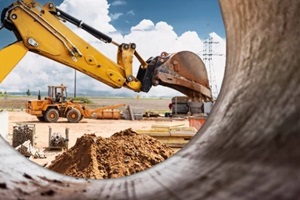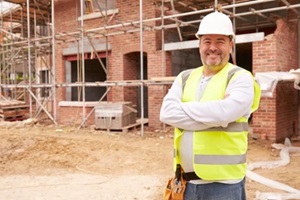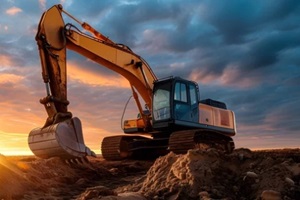
From heavy machinery to advanced building materials, specialized resources are often the backbone of successful construction projects. Enabling contractors to navigate challenges, uphold standards, and meet deadlines, as well as equipment and materials, are indispensable assets.
Because of the value of these materials, comprehensive protection, such as a home builder’s insurance policy, is key in avoiding loss, damage, and the financial consequences they can bring.
Here’s how financial losses can be mitigated or avoided entirely through comprehensive and strategic insurance coverage for specialized construction equipment.
Identifying Your Specialized Assets
When determining which insurance policies are most helpful for a construction project, cataloging equipment and materials is an excellent place to start.
Damage or loss of specialized equipment such as cranes, scaffolding, or excavators could result in substantial financial implications for construction companies—which typically come out of pocket if insurance coverage is lacking.
Such unexpected costs can have dramatic impacts in the best of times and may ultimately financially ruin businesses that are not prepared for the expense.
Documenting specialized assets can give contractors insight into where vulnerabilities lie and help keep track of things such as usage patterns and maintenance schedules. Determine the potential replacement value of essential machinery to establish a fundamental starting point for coverage limits and minimums.
Types of Insurance Coverage Available
Many types of insurance can safeguard specialized construction equipment against damage, total loss, vandalism, and more. Property insurance is a common baseline that provides protection for machinery within the company’s building (or, sometimes, at a job site—always read the details of your policy).
However, it is far from the only type of protection a construction team should carry. Another essential policy for contractors is builder’s risk insurance (also called home builder’s insurance).
This type of insurance offers protection for buildings currently under construction, as well as materials (such as equipment) that are on-site during the construction process. Several possible hazards are covered under this policy, such as vandalism, fire and water damage, explosions, structural collapses, damage from harsh weather, and more.

While builder’s risk insurance safeguards specialized construction equipment from many perils, it will not address employee theft, flawed products, and ordinary wear and tear.
Another essential choice for complete insurance coverage is inland marine insurance. This policy is similar to builder’s risk insurance but targets business property en route to a destination, such as a work site.
Items typically covered under this type of insurance include workers’ clothing and heavy equipment used during construction. Tools that are rented, leased, or owned are also covered under this policy.
Navigating Insurance Claims for Specialized Equipment and Materials
Heavy equipment and specialized machinery are typically more advanced than the average tool. As a result, many things can go wrong during construction that can be difficult to predict, and submitting an insurance claim may be more complex.
Regardless of what has occurred, a good first step in this process is creating an incident report. Incident reports will help reveal how and why damage occurred and will help prevent such harm in the future.
For instance, was the equipment being used in accordance with the manufacturer’s guidelines? Who was operating it, and what occurred when the damage happened? Was anyone present, or did your team discover the damage upon entering the site?
The Occupational Safety and Health Administration (OSHA) has published guidance on reporting workplace incidents, which is a good springboard for examining your own scenario.

Include the time and place of the incident, details of how the event occurred, whether anyone was injured (and, if so, their recollection of the incident), the corrective action that was taken post-incident, and the contact information of the person who filed the report. Once you have collected all this information, be sure to submit it and as much evidence as possible to your insurance agency. The best agencies are available at any time.
They may even have an online portal for you to submit your documentation so that you don’t have to wait until the office opens on a weekday to begin processing your claim. Remember to be responsive; you may need to answer questions or provide additional documentation for your claim to proceed.
Protect Your Construction Business with Burton & Company
In the ever-evolving construction world, securing the correct insurance policies is a cornerstone of project success and successful risk management. By tailoring insurance policies to meet specific project needs when specialized construction equipment is in use, construction workers and companies can confidently pursue projects.
The experts at Burton & Company can help you protect your specialized machinery against damage and the financial repercussions of losing important equipment. Contact Burton & Company to work with an insurance expert to secure your construction machinery.

